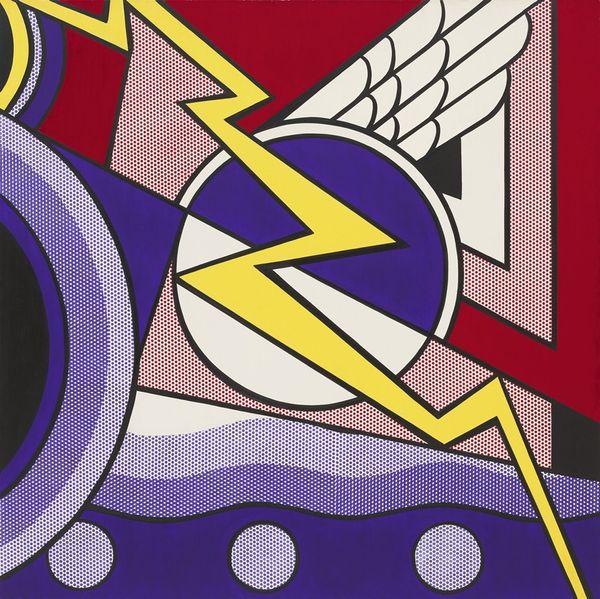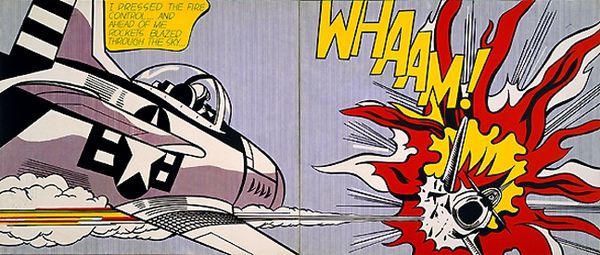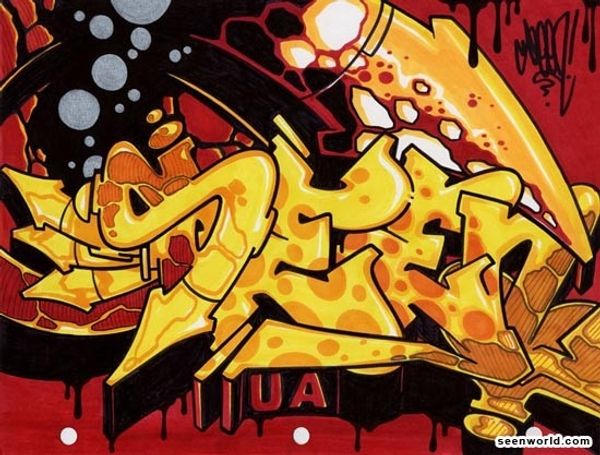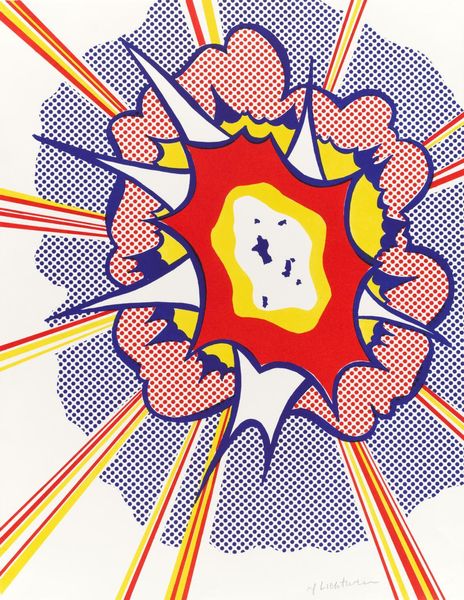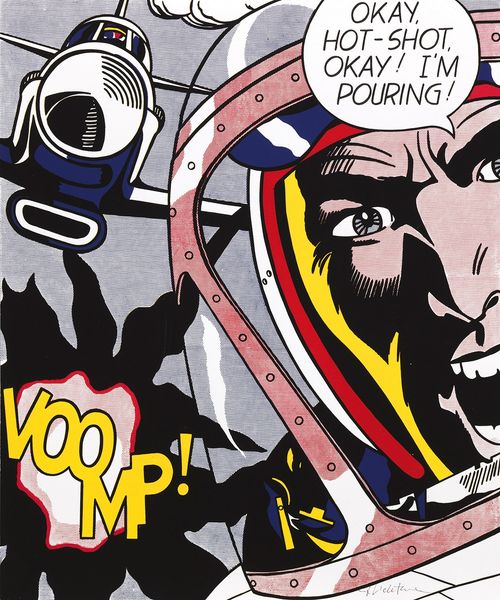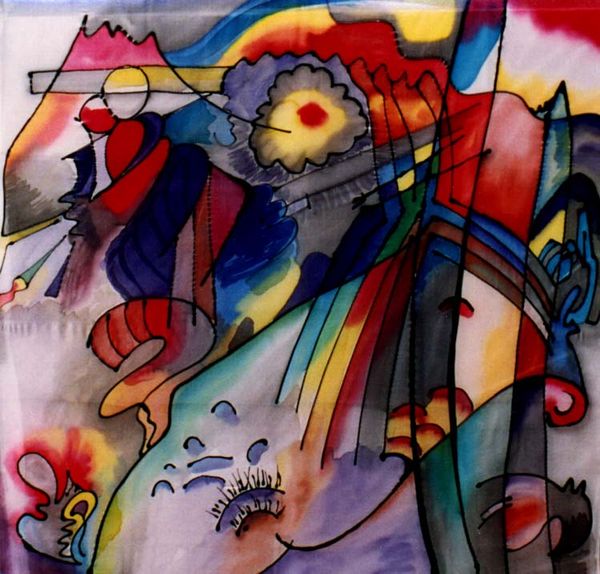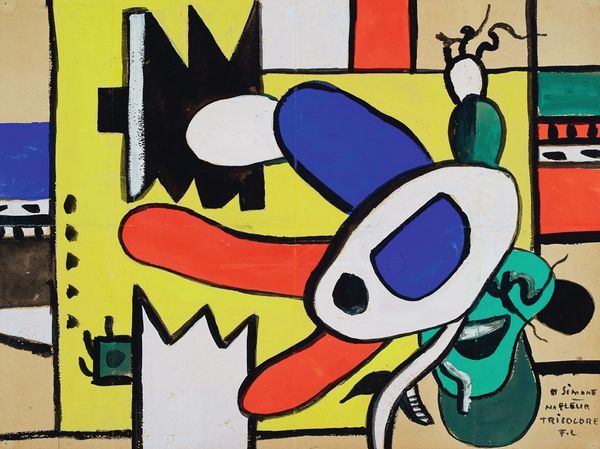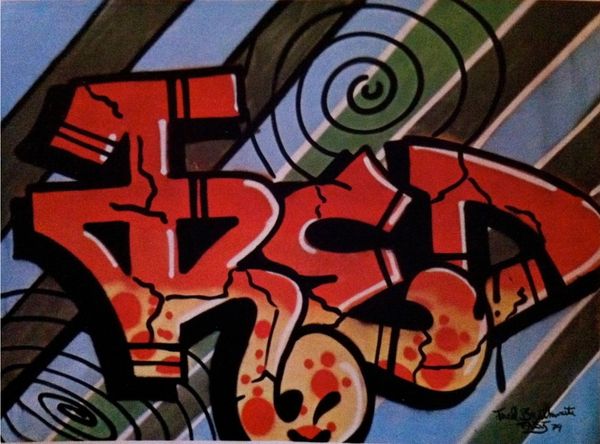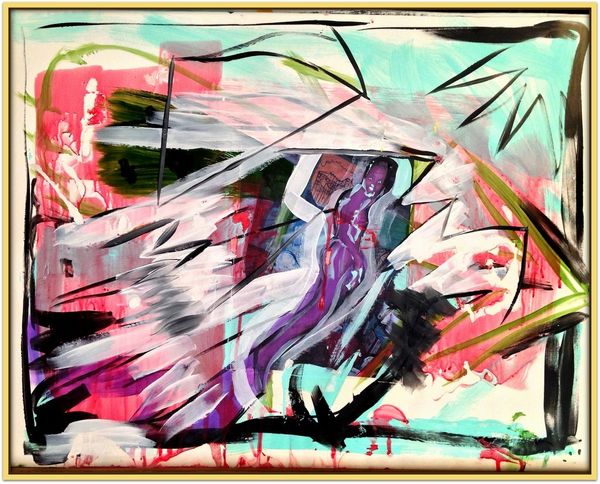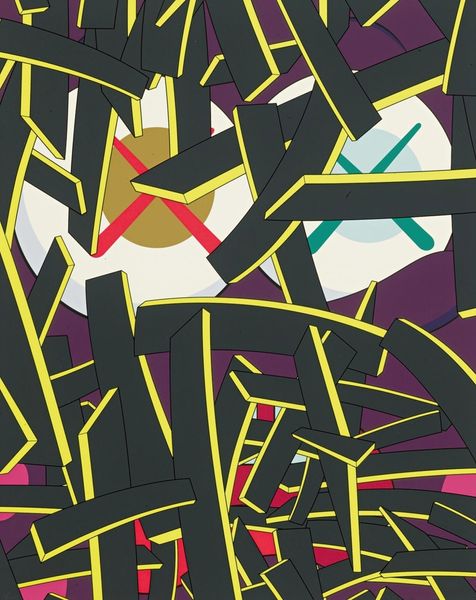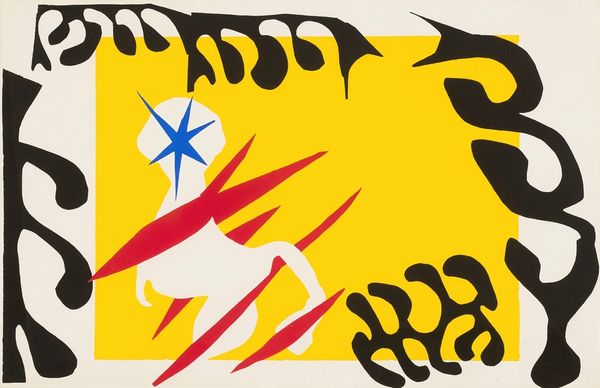
painting, acrylic-paint
#
pop art-esque
#
narrative-art
#
painting
#
pop art
#
acrylic-paint
#
geometric
#
comic book style
#
abstraction
#
pop-art
#
comic art
#
modernism
Dimensions: 172.7 x 203.2 cm
Copyright: Roy Lichtenstein,Fair Use
Editor: We're looking at "Blam" by Roy Lichtenstein, painted in 1962 using acrylics. It’s such a powerful image; the onomatopoeia "Blam" really grabs your attention. It has a graphic, almost comic-book-like feel to it. What do you see in this piece, looking at it from your perspective? Curator: I see a commentary on the industrialization of war and the consumption of imagery. Lichtenstein is taking a mass-produced, arguably low-art form, and elevating it to "high art" status. He replicates the Ben-Day dots, mimicking the printing process. Think about the labour involved, painstakingly recreating a machine-made aesthetic by hand. Editor: That's fascinating. So, it's not just about the image itself, but about how it's made? Curator: Precisely! The medium itself – acrylic on canvas – further emphasizes the mass production aspect. Acrylics, being a relatively new and readily available material at the time, signify a break from traditional oil paints. It speaks to a society increasingly reliant on synthetic, manufactured goods. The scale matters too, consider the canvas size and how its manufacturing impacted painting overall. Editor: How does its relation to the production of comics change how we perceive the final painting? Curator: Comic books themselves are a product of mass culture. Lichtenstein forces us to consider what we deem "art" and who decides its value. Is it the artist's hand, the subject matter, or the social context of its creation and reception? How does labour function differently in the production of canvas art vs a single issue of a mass-produced comic book? Editor: So, by replicating this mass-produced aesthetic, he's critiquing both the art world and the consumer culture that surrounds it. It’s really powerful when you consider the labor and material. Curator: Exactly! Lichtenstein makes us aware of not just what we are seeing, but how and why it was made. He brings it “high art” not through craft but instead through scale and concept. Editor: This perspective makes me consider the material implications much more now. Thanks! Curator: Me too, I will reconsider painting through production’s eyes more!
Comments
No comments
Be the first to comment and join the conversation on the ultimate creative platform.
